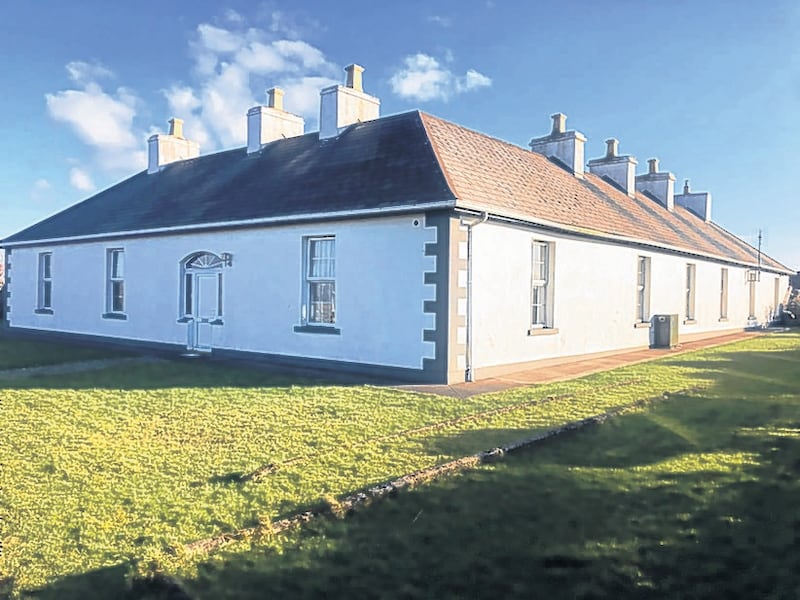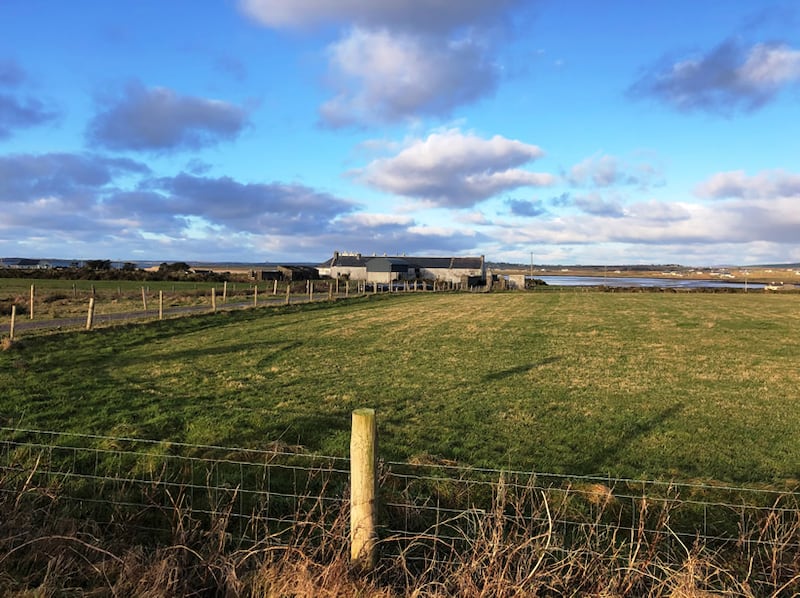It’s been more than a decade since you, dear readers, first kindly allowed me into your homes. Now it’s your turn, so welcome to mine.
I’ve moved into a Paul Henry painting in part of the world I knew little about. When asked if the house I was going to rent had a view of the sea, the answer – “Sure you can’t really see much else” – had me on the winding road to the less-travelled Erris peninsula, a salt-beaten blanket at the edge of Europe. A place with more water than land.
Two years have passed and I’ve since bought a house. And a farm.
It took six months to buy and was sold as Victorian due to the year of construction, but features are suggesting a more Georgian feel with a lovely stable block on a large farm holding by Mayo standards.
From Baby Reindeer and The Traitors to Bodkin and The 2 Johnnies Late Night Lock In: The best and worst television of 2024
100 Years of Solitude review: A woozy, feverish watch to be savoured in bite-sized portions
How your mini travel shampoo is costing your pocket and the planet - here’s an alternative
And now, complete with a herd number, organic courses take precedence over entertainment at weekends: learning and creeping about to hear corncrakes, and how to rescue whales using life-size, real-weight inflatable tubes are among the activities.

In truth I had no intention of farming the land. Previous attempts at animal husbandry on one acre were woeful, so think how wrong I could get it on 70. But as the house stood in the middle of the holding, it made more sense to buy the lot, then sell on the land, where I could decide the curtilage.
Talked out of it by a friend, I chose not to sell. Not only would I be breaking up a historic farm, but there were entitlements attached. It’s a word that has always puzzled me. But on sound advice from an agricultural consultant, farming the land, thus ensuring it remains together with the house, could help to bring an income to further renovate what he said were important Victorian outhouses and sheds.
It’s all a learning curve, but I’ve decided not to sell any land, opting instead to become an organic farmer. A woman who drowned a thousand worms.
Discovered above two false ceilings in what the couple last used as a sittingroom is a bit of an enigma. A total of 70 or so game hooks are still hanging from a 16-ft-high ceiling, hidden for decades
Now back in the wellies, I live in a little converted cow shed with views I’d challenge anyone to equal, while I take on the restoration of my new home at Doolough Lodge in Co Mayo.
It’s an L-shaped one-storey house presumed to date from 1854-1860. I’m on its history path. It was a Bingham house. The family were landlords in the area who would have had most of the ground rent for Castlebar. The joke that Lord Lucan may have hidden out here is often cast, but some long past members of the family were reprehensible.

Most of its interior was hidden – except three formal rooms to the front – with layers of insulation added over the years, while its elderly residents moved to the back of the house for comfort. Downsizing within, if you like.
Discovered under not one, but two false ceilings in what the couple last used as a sittingroom, is a bit of an enigma. A total of 70 or so game hooks are still hanging from a whopping 16-ft-high ceiling, hidden for decades in what was the original, and almost commercial-sized kitchen, for the scale of the house. Why was the kitchen so large?
It was as if this place here at the end of the world had found me. Anyone who knows me will understand why.
Behind fake walls and insulation revealed large old keystones and the battered outline of a huge old hearth. Then there was a door. You’d need to be about 11ft tall to even eye the base of it, not to mind trying to get through it. What the hell was a small door doing so far up towards the ceiling?
It’s still an isolated place; public train and bus services really need to have dinner together
Then there’s technical stuff such as seven lovely chimneys, all of which require attention. As I’ve chosen to preserve its heritage, I cannot really avail of the SEAI grant, as to insulate inside would lose the coving, which some have suggested was moulded in situ.
In terms of how isolated this house is, these features could be important, given how long it could have taken craftsmen to come here, back when there were no cars. So I am on the hunt to find its provenance.
Curiosities include about 13 sets of pillars. They were mad about their stone pillars here and gave some marble tops for a bit of grandeur. It’s a modest enough house at 219sq m (2,357sq ft) but there are also the stables, outhouses and the barn.
And then there’s the sea at the end of the garden, and that was the clincher.
It’s still an isolated place; public train and bus services really need to have dinner together, but it’s a bit of a journey as you’ve probably guessed, and one I’d like to share.
That’s Willow in the window, by the way.











